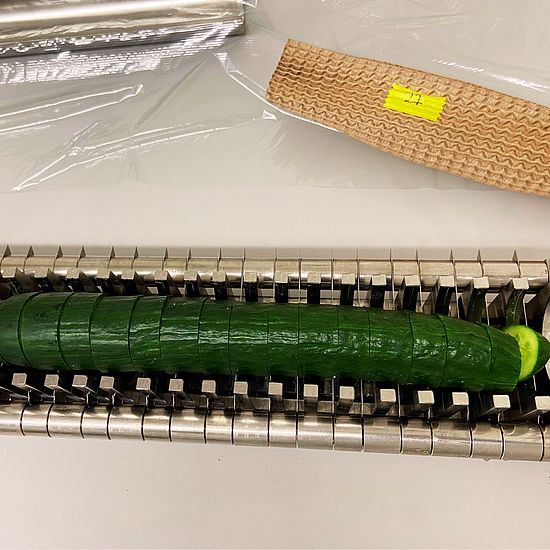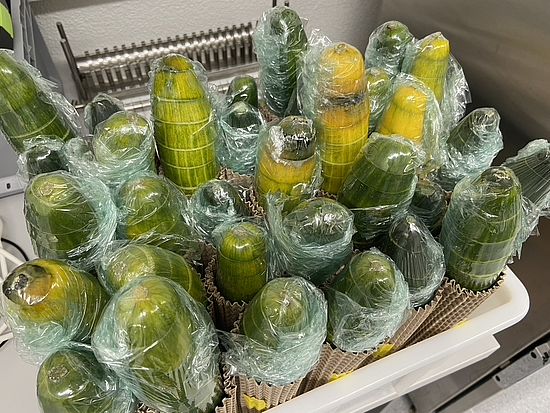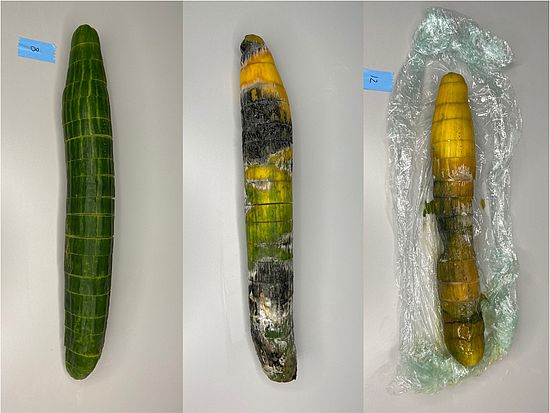How vital is the cucumber you eat?
Have you ever wondered how the cucumber in your shopping basket is ´in its skin´? Probably not. Yet there are scientists researching exactly this. With surprising results.
ERIKA VAN ZINDEREN BAKKER, Change Inc.
August 28, 2023
At the University of Basel, scientists are researching the vitality of cucumbers. They are looking to what extent factors such as pesticides, soil type, full soil or not, environment, transport and storage affect the crop. Possibly the results could also provide information on other crops. One of the researchers is Dutch Marjolein Doesburg-van Kleffens. Change Inc. spoke to her about the project during cucumber time.
Why cucumbers?
It was specifically chosen to do this research with cucumbers because of their self-healing ability. Doesburg-van Kleffens explains: "Cucumbers are known to be able to grow back together after being sliced. Slice healing, we call it. Courgettes and pumpkins also do this, for example. If you slice a cucumber and put them against each other, after a while they will become one again. However, you can still clearly see where it has been cut." This phenomenon makes the cucumber very suitable to use for this research.
Vitality
"A partnership with research groups from Denmark, Germany and Switzerland is doing a series of studies. We want to see if there are differences in vitality between regularly grown cucumbers, organic cucumbers and biodynamically (see box) grown cucumbers," says the researcher." The term vitality is widely used to indicate the quality of crops and products. Doesburg-van Kleffens: "The definition of vitality includes the integration of growth and ripening - think of the Italian sun-ripened tomato, versus the tasteless watery large Dutch chestnut tomato as an extreme example. Vitality also manifests itself as resilient animals and plants that can take a pounding."
Organic and biodynamic
When producing organic food, the environment and animal welfare are taken into account as much as possible. Organic does not use chemical pesticides, artificial fertilisers and genetically modified organisms. Biodynamic agriculture (BD) also meets the standards for organic farming, but goes a step further. This type of agriculture has additional requirements and its own principles. The basis of BD agriculture is the soil. Crops are always grown outdoors. Farms producing in the BD way have a closed cycle system. This applies to the resources used, but a BD farmer also takes into account the cycle of the year. Another important feature of BD farming is open pollination. This involves the most natural way of breeding: developing a seed-fixed variety. No artificial methods are used, such as interbreeding in plant species that are naturally cross-pollinators.
Procedure
This vitality is examined as follows. "We have a special device," says the researcher, "a kind of guillotine with 21 blades, with which we cut the cucumbers into 22 slices in one go. Everything blinded, so we don't know which cucumbers are conventional, organic or BD grown. Then we wrap them tightly in foil. The cucumbers also get another protective ribbed cardboard around them and then they go together in a special box, from which cucumber fluid can drip down. The whole thing then goes into an incubator with a temperature of 23.5 degrees Celsius for a fortnight."
Degradation
"If you take the cucumbers out after two weeks, you see big differences. One cucumber is totally filthy, rotten and discoloured and the other is still completely dark green and completely grown together. What we then do is clamp the cucumbers in a stand and hang weights on them. Do you know how many kilos such a cucumber grown together can hold? Sometimes as much as 8 kilos!"
864 cucumbers
In the end, more is being considered than just the weight the cucumbers can bear. Colour retention and the rotting process are also important markers that tell more about vitality. "We do eight experiments per country (Denmark, Germany and Switzerland) each with 36 cucumbers each time. So, a total of 864 cucumbers. Hopefully we will be able to tell more about that by the end of this year."
Source: https://www.change.inc/agri-food/hoe-vitaal-is-de-komkommer-die-je-eet-40345



